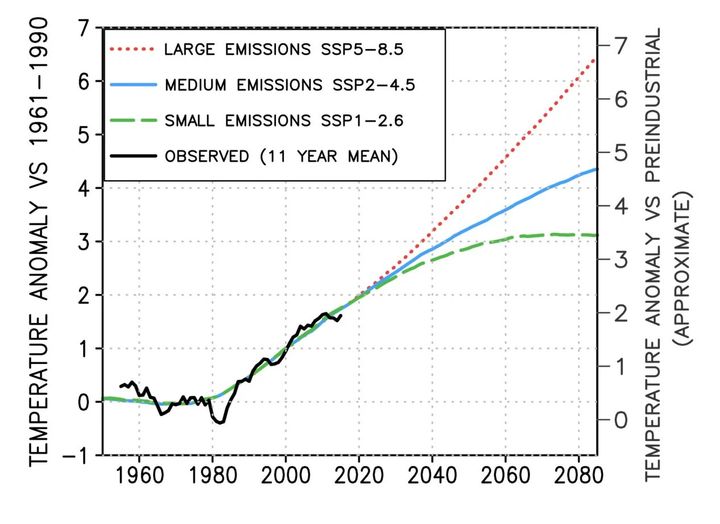Changes in the natural environment of the north will be rapid and partly irreversible
With the climate measures already decided, Lapland will grow up to 2–3 degrees warmer than today over the next 50 years, or 4–5 degrees compared to pre-industrial levels. This is revealed by a temperature analysis focused on Northern Norway and Swedish and Finnish Lapland.

The rising temperature will have a significant impact on the environment and livelihoods in the area. Biotopes will change and disappear as, for example, palsa mires and permafrost melt and mountain birch forests in many places die and turn into secondary mountain heaths and pine forests. The Arctic landscape will turn greener as open areas become overgrown with scrub and grasses. Animal species of the north will become endangered, and some may be lost. Almost 40 per cent of the open fell species are already threatened.
Increasing turbidity and eutrophication in waters and the spread of alien species, including the pink salmon, hogweeds and the fox into this area will make things worse for many species. Winters in Lapland will arrive later and be milder, which will affect negatively many livelihoods, including reindeer herding, nature tourism and construction.
All this is expected to happen over the lifetime of a person.
Temperatures to rise by 4–5 degrees with current climate actions
The Finnish Environment Institute coordinated the work on an analysis that produced information about climate warming in Fell Lapland. This area is already approx. two degrees warmer than in pre-industrial times. Even if most countries achieved their emissions reduction targets under the Paris Agreement reasonably well, the temperature in Fell Lapland will continue to increase by another 2 or 3 degrees over the next 50 years. This prediction is based on a situation where countries fulfil their current emissions reduction commitments without bringing in more stringent targets.
If nothing is done to control the increase in greenhouse gas emissions, at worst the temperature in Lapland may go up by 7 degrees compared to pre-industrial levels. The rise in temperature could be limited to 3 to 4 degrees, however, if all countries introduced new, strict and comprehensive restrictions in energy production, transport, construction, food production and consumption.

The Finnish Meteorological Institute, Metsähallitus Parks&Wildlife and Umeå University as well as a number of Nordic research and expert institutions and universities participated in producing the analysis.
Information on the impact of climate change at a single location
The analysis was produced for the virtual photographic exhibition Through the eyes of the gyrfalcon. This exhibition gathers for the first time together comprehensive information about the impact of climate change in Northern Norway and Finnish and Swedish Lapland. The exhibition combines impressive photographic art with a scientific knowledge base. It shows how climate change will affect the natural environment, livelihoods and local people’s lives in the north. The exhibition can be used as teaching material and for other similar purposes. The physical version of the exhibition will tour Finland, Sweden and Norway in 2023–2026.
Further information
- Exhibition's temperature analysis
- Virtual photographic exhibition Through the eyes of the gyrfalcon
- Riku Lumiaro, Senior Specialist, Finnish Environment Institute, firstname.lastname@syke.fi, tel. +358 29 525 1394 (biodiversity, the exhibition
- Kimmo Ruosteenoja, Researcher, Finnish Meteorological Institute, firstname.lastname@fmi.fi, +358 29 539 4128 (climate change)
Alternative languages
Subscribe to releases from Finlands miljöcentral
Subscribe to all the latest releases from Finlands miljöcentral by registering your e-mail address below. You can unsubscribe at any time.
Latest releases from Finlands miljöcentral
In our pressroom you can read all our latest releases, find our press contacts, images, documents and other relevant information about us.
Visit our pressroom